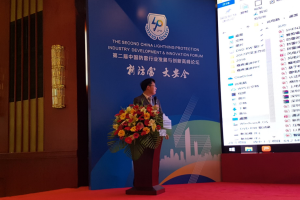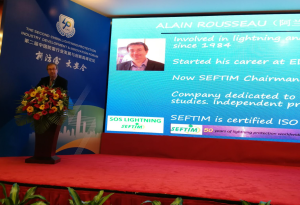Nov 14
17ème forum de l’APF (Association Protection Foudre)
 Le désormais habituel forum de l’APF a été l’occasion de réunir les divers intervenants du domaine de la protection contre la foudre pour une journée de présentations et de débats. SEFTIM en tant qu’animateur du groupe en charge de ce projet a présenté l’état d’avancement du « Le guide protection foudre de l’habitation individuelle » document normatif qui doit permettre une mise en œuvre simplifiée de la protection des habitations privatives.
Le désormais habituel forum de l’APF a été l’occasion de réunir les divers intervenants du domaine de la protection contre la foudre pour une journée de présentations et de débats. SEFTIM en tant qu’animateur du groupe en charge de ce projet a présenté l’état d’avancement du « Le guide protection foudre de l’habitation individuelle » document normatif qui doit permettre une mise en œuvre simplifiée de la protection des habitations privatives.
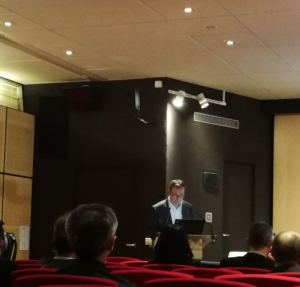 Ce document donne les principes de réalisation d’une installation de protection foudre pour l’habitat individuel de moins de 500 m² et exclusivement pour les habitations non mitoyennes, tant pour la protection contre les chocs de foudre directs que pour la protection contre les surtensions qui en découlent.
Ce document donne les principes de réalisation d’une installation de protection foudre pour l’habitat individuel de moins de 500 m² et exclusivement pour les habitations non mitoyennes, tant pour la protection contre les chocs de foudre directs que pour la protection contre les surtensions qui en découlent.
L’installation de protection foudre devra être réalisée par une entreprise compétente dans le domaine de la protection foudre et ayant du personnel qualifié pour ce type de réalisation.
Il ne s’applique pas aux bâtiments d’habitation collectifs ni aux établissements tertiaires, industriels et agricoles.
Le document préparé par l’APF doit maintenant être discuté en commission protection foudre (81) de l’AFNOR avant publication.
Nov 10
Participation at INDIA NUCLEAR ENERGY 2017 in Mumbai INDIA
 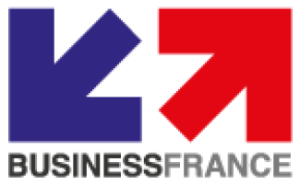 Following its development in India, SEFTIM participated this year at INE 2017 from 9th to 11th November, devoted to the nuclear industry in India (Nehru Center Mumbai). SEFTIM was present on the French pavilion organized by Business France. Following its development in India, SEFTIM participated this year at INE 2017 from 9th to 11th November, devoted to the nuclear industry in India (Nehru Center Mumbai). SEFTIM was present on the French pavilion organized by Business France.
See attached the catalog extract concerning SEFTIM.INE2017catalog_SEFTIM
http://aifen.fr/ (in French) http://giin.fr/ (in French) |
Nov 10
Participation au Salon INDIA NUCLEAR ENERGY 2017 à Bombay(Mumbai) INDE

 Suite à son développement en Inde, SEFTIM a participé cette année au salon INE 2017 du 9 au 11 novembre, consacré à l’industrie nucléaire en Inde (Nehru Centre Mumbai).
Suite à son développement en Inde, SEFTIM a participé cette année au salon INE 2017 du 9 au 11 novembre, consacré à l’industrie nucléaire en Inde (Nehru Centre Mumbai).
SEFTIM était présent sur le pavillon français organisé par Business France.
Voir en PJ l’extrait de catalogue concernant SEFTIM. INE2017catalog_SEFTIM
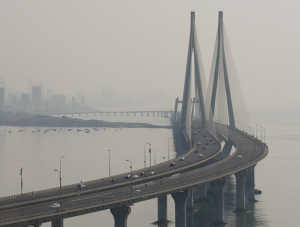 Les sociétés suivantes étaient présentes sur le salon : ANDRA (Mission industrielle concernant, d’une part, les critères d’acceptation et de contrôle des déchets et, d’autre part, la localisation, la construction, l’exploitation, la fermeture et la surveillance des dépôts), AXON CABLE (développe des fils, câbles, connecteurs et assemblages de câbles) , CEA (Fournit au gouvernement et à l’industrie français l’expertise technique et l’innovation dans les systèmes d’énergie nucléaire pour développer une énergie nucléaire durable à la fois sûre et compétitive sur le plan économique), GIIN (Représente les petites et moyennes entreprises et les grands groupes, du combustible de fabrication au démantèlement des centrales nucléaires), INSTN (Dans le cadre du CEA, l’Institut français d’éducation et de formation aux applications nucléaires couvre toutes les applications de la physique nucléaire, de la production d’énergie à l’utilisation des radio-isotopes en biologie et en médecine.), I2EN (regroupe formation professionnelle initiale, formation initiale et postuniversitaire, et formation professionnelle),
Les sociétés suivantes étaient présentes sur le salon : ANDRA (Mission industrielle concernant, d’une part, les critères d’acceptation et de contrôle des déchets et, d’autre part, la localisation, la construction, l’exploitation, la fermeture et la surveillance des dépôts), AXON CABLE (développe des fils, câbles, connecteurs et assemblages de câbles) , CEA (Fournit au gouvernement et à l’industrie français l’expertise technique et l’innovation dans les systèmes d’énergie nucléaire pour développer une énergie nucléaire durable à la fois sûre et compétitive sur le plan économique), GIIN (Représente les petites et moyennes entreprises et les grands groupes, du combustible de fabrication au démantèlement des centrales nucléaires), INSTN (Dans le cadre du CEA, l’Institut français d’éducation et de formation aux applications nucléaires couvre toutes les applications de la physique nucléaire, de la production d’énergie à l’utilisation des radio-isotopes en biologie et en médecine.), I2EN (regroupe formation professionnelle initiale, formation initiale et postuniversitaire, et formation professionnelle),
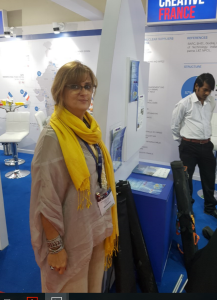
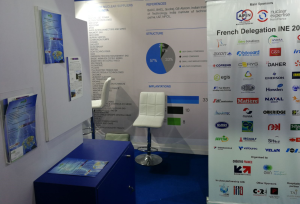 JST TRANSFORMATEURS (Conception, fabrication et maintenance de grands transformateurs de puissance électrique), BUSINESS France (agence nationale de développement international de l’économie française, chargée de favoriser la croissance des exportations des entreprises françaises, de promouvoir et de faciliter les investissements internationaux en France). EDF, NAVAL GROUP, SEFTIM, CORYS, SCHNEIDER ELECTRIC, EMERSON faisaient également partie de la délégation ainsi que l’AIFEN et l’association PFME.
JST TRANSFORMATEURS (Conception, fabrication et maintenance de grands transformateurs de puissance électrique), BUSINESS France (agence nationale de développement international de l’économie française, chargée de favoriser la croissance des exportations des entreprises françaises, de promouvoir et de faciliter les investissements internationaux en France). EDF, NAVAL GROUP, SEFTIM, CORYS, SCHNEIDER ELECTRIC, EMERSON faisaient également partie de la délégation ainsi que l’AIFEN et l’association PFME.
Oct 24
Seminars in China
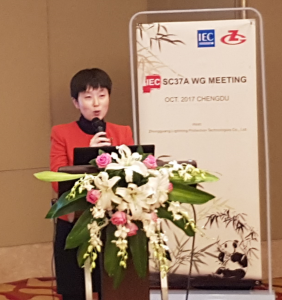 The working groups meeting of the IEC Surge Protective Device Committee (37A) in Chengdu (Sichuan) was also an opportunity to participate in two major events in China.
The working groups meeting of the IEC Surge Protective Device Committee (37A) in Chengdu (Sichuan) was also an opportunity to participate in two major events in China.
From 16 to 20 October, working groups 3 (application guide for LV surge arresters), 4 (telecom surge arresters), 5 (LV surge arresters) and 9 (new projects) met in Chengdu (known among other things for giant Pandas and Sichuan pepper) at the invitation of the company zhongguang (http://en.zhongguang.com/) with the aim of preparing the standards of tomorrow mainly in the field of DC surge arresters and the new organization of surge arresters standards BT (for the record, LV surge arresters standards will be transformed into a series 61643 including part 01 (general, applicable to all surge arresters), -11 (AC surge arresters), -21 (surge arresters data and telecom), 31 (surge arresters for photovoltaic applications) and 41 (DC surge arresters) Two new projects are being studied by the AHG09 group: surge arresters with additional functions (called SMART SPD) and specific disconnectors for surge arresters (SSD).
Note: a Low Voltage surge arrester is named Surge Protective Device
It should be noted that the meeting was held at the same time as the World Standards Day. Each year on 14 October, the members of the IEC, ISO and ITU celebrate World Standards Day, which is a means of paying tribute to the collaborative efforts of the thousands of experts worldwide who develop the voluntary technical agreements that are published as international standards. The theme of this year was « Standards make cities smarter » that matches very well with the « smart » SPD.
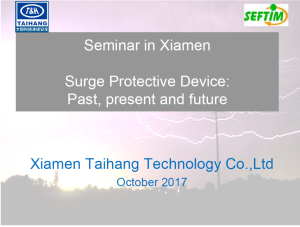 Following these meetings, SEFTIM participated in a conference organized by Taihang Technology in Xiamen (http://www.spd-th.com/?Language=EN). This conference (international symposium on lightning protection technology) which brought together more than 100 people from several provinces was an opportunity to discuss the future of surge arresters with presentations in fields as diverse as rail applications, detection of storms with Sinopec and the guidelines of the Ministry of Housing and Urban and Rural Development.
Following these meetings, SEFTIM participated in a conference organized by Taihang Technology in Xiamen (http://www.spd-th.com/?Language=EN). This conference (international symposium on lightning protection technology) which brought together more than 100 people from several provinces was an opportunity to discuss the future of surge arresters with presentations in fields as diverse as rail applications, detection of storms with Sinopec and the guidelines of the Ministry of Housing and Urban and Rural Development.
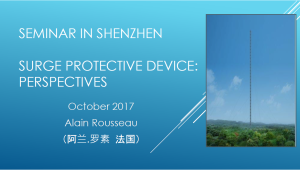 Finally, SEFTIM took part in the “second China lightning protection industry development & innovation forum” in Shenzhen. This event brought together more than 300 people from the entire lightning protection business in China, the people in charge of lightning protection and associated standards in the Ministry of Housing and Urban and Rural Development as well as experts from The Chinese meteorological administration, was an opportunity to discuss many innovative topics that clearly show the potential for Chinese innovation in this field.
Finally, SEFTIM took part in the “second China lightning protection industry development & innovation forum” in Shenzhen. This event brought together more than 300 people from the entire lightning protection business in China, the people in charge of lightning protection and associated standards in the Ministry of Housing and Urban and Rural Development as well as experts from The Chinese meteorological administration, was an opportunity to discuss many innovative topics that clearly show the potential for Chinese innovation in this field.
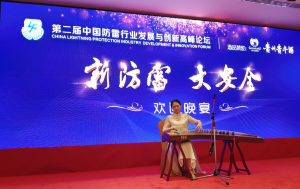 It is also interesting to note that China already has standards on SMART SPDs (surge arresters communicating about their state, their environment and their expected lifetime), SSD (special circuit breakers for surge arresters application able to withstand significant lightning surge while quickly cutting low fault currents), and multi-pulse tests (tests performed by injecting several pulses of low amplitude but consecutive which is very stringent especially for varistors).
It is also interesting to note that China already has standards on SMART SPDs (surge arresters communicating about their state, their environment and their expected lifetime), SSD (special circuit breakers for surge arresters application able to withstand significant lightning surge while quickly cutting low fault currents), and multi-pulse tests (tests performed by injecting several pulses of low amplitude but consecutive which is very stringent especially for varistors).
The presentations by SEFTIM focused on the coordination of SPD protection and the future of surge arresters as well as of the surge protective device committee.
Oct 24
Séminaires en Chine
 La réunion des groupes de travail du Comité parafoudre (37A) de l’IEC à Chengdu (Sichuan) a été aussi l’occasion de participer à deux grands évènements en Chine
La réunion des groupes de travail du Comité parafoudre (37A) de l’IEC à Chengdu (Sichuan) a été aussi l’occasion de participer à deux grands évènements en Chine
Du 16 au 20 octobre, les groupes de travail 3 (guide d’application des parafoudres BT), 4 (parafoudres télécom), 5 (parafoudres BT) et 9 (projets nouveaux) se sont réunis à Chengdu (connu entre autre pour les pandas géants et le poivre Sichuan) à l’invitation de la société zhongguang (http://en.zhongguang.com/) dans l’objectif de préparer les normes de demain essentiellement dans le domaine des parafoudres DC et la nouvelle organisation des normes parafoudres BT (pour mémoire, les normes parafoudres BT vont se transformer dans une série 61643 comprenant la partie 01 (généralités, applicables à tous les parafoudres), -11 (parafoudres AC), -21 (parafoudres data et télécom), 31 (parafoudres PV pour applications photovoltaïques) et 41 (parafoudres DC). Deux projets nouveaux sont étudiés par le groupe AHG09 : les parafoudres avec fonctions additionnelles (appelé SMART SPD) et les déconnecteurs spécifiques pour parafoudres (SSD).
 A noter que la réunion se tenait au même moment que le la Journée mondiale de la normalisation. Chaque année, le 14 octobre, les membres de l’IEC, de l’ISO et de l’UIT célèbrent la Journée mondiale de la normalisation, qui permet de rendre hommage aux efforts déployés en collaboration par les milliers d’experts du monde entier qui élaborent les accords techniques d’application volontaire, publiés sous forme de normes internationales. World Standards Day. Le thème de cette année était « Les normes rendent les villes plus intelligentes » qui sonnait en résonance avec le projet des parafoudres intelligents : « smart » SPD.
A noter que la réunion se tenait au même moment que le la Journée mondiale de la normalisation. Chaque année, le 14 octobre, les membres de l’IEC, de l’ISO et de l’UIT célèbrent la Journée mondiale de la normalisation, qui permet de rendre hommage aux efforts déployés en collaboration par les milliers d’experts du monde entier qui élaborent les accords techniques d’application volontaire, publiés sous forme de normes internationales. World Standards Day. Le thème de cette année était « Les normes rendent les villes plus intelligentes » qui sonnait en résonance avec le projet des parafoudres intelligents : « smart » SPD.
 A la suite de ces réunions, SEFTIM a participé à une conférence organisée par la société Taihang Technology in Xiamen (http://www.spd-th.com/?Language=EN). Cette conférence (international symposium on lightning protection technology) qui a réuni plus de 100 personnes venues de plusieurs provinces a été l’occasion d’échanger sur le futur des parafoudres avec des présentations dans des domaines aussi variés que les applications rail, la détection des orages avec Sinopec et les orientations du Ministère du logement et du développement urbain et rural.
A la suite de ces réunions, SEFTIM a participé à une conférence organisée par la société Taihang Technology in Xiamen (http://www.spd-th.com/?Language=EN). Cette conférence (international symposium on lightning protection technology) qui a réuni plus de 100 personnes venues de plusieurs provinces a été l’occasion d’échanger sur le futur des parafoudres avec des présentations dans des domaines aussi variés que les applications rail, la détection des orages avec Sinopec et les orientations du Ministère du logement et du développement urbain et rural.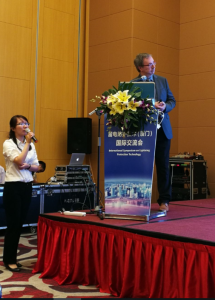
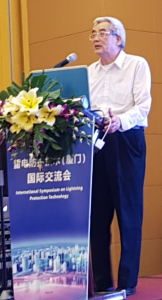
 Enfin, SEFTIM a participé au « second China lightning protection industry development & innovation forum » à Shenzhen. Cet évènement qui a réuni plus de 300 personnes de toute la profession de la protection foudre en Chine, les personnes en charge de la protection contre la foudre et des normes du domaine au Ministère du logement et du développement urbain et rural ainsi que des experts de la météo (Chinese meteorological administration) a été l’occasion d’échanger sur de nombreux sujets novateurs montrant clairement le potentiel d’innovation Chinois dans ce domaine.
Enfin, SEFTIM a participé au « second China lightning protection industry development & innovation forum » à Shenzhen. Cet évènement qui a réuni plus de 300 personnes de toute la profession de la protection foudre en Chine, les personnes en charge de la protection contre la foudre et des normes du domaine au Ministère du logement et du développement urbain et rural ainsi que des experts de la météo (Chinese meteorological administration) a été l’occasion d’échanger sur de nombreux sujets novateurs montrant clairement le potentiel d’innovation Chinois dans ce domaine.
 Il est d’ailleurs intéressant de noter que la Chine possède déjà des normes sur les SMART SPD (parafoudres intelligents en traduction littérale en fait les parafoudres communiquant sur leur état, leur environnement et leur durée de vie prévisible), les SSD (disjoncteurs spéciaux pour application parafoudres capables de tenir des choc de foudre importants tout en coupant rapidement de faibles courants de défaut), et les multi-impulse tests (essais réalisés en injectant plusieurs impulsions de faible amplitude mais consécutives ce qui est très contraignant notamment pour les varistances).
Il est d’ailleurs intéressant de noter que la Chine possède déjà des normes sur les SMART SPD (parafoudres intelligents en traduction littérale en fait les parafoudres communiquant sur leur état, leur environnement et leur durée de vie prévisible), les SSD (disjoncteurs spéciaux pour application parafoudres capables de tenir des choc de foudre importants tout en coupant rapidement de faibles courants de défaut), et les multi-impulse tests (essais réalisés en injectant plusieurs impulsions de faible amplitude mais consécutives ce qui est très contraignant notamment pour les varistances).
Les présentations de SEFTIM concernaient plus particulièrement la coordination en niveau de protection des parafoudres et le futur des parafoudres ainsi que du comité de normalisation parafoudre.
Sep 19
Colloque International sur la foudre et les réseaux ICLPS 2017
 Du 18 au 19 septembre s’est tenu à Ljubljana (Slovénie) sous l’égide du CIGRE une conférence de 2 jours sur l’impact de la foudre sur les réseaux. Après deux conférences invitées divers sujets ont été abordés depuis l’importance des réseaux de détection des orages, l’expérience sur les parafoudres HT en ligne, la mesure de terre foudre au pied des pylônes jusqu’aux modèles de transformateurs pour la simulation des surtensions dues à la foudre.
Du 18 au 19 septembre s’est tenu à Ljubljana (Slovénie) sous l’égide du CIGRE une conférence de 2 jours sur l’impact de la foudre sur les réseaux. Après deux conférences invitées divers sujets ont été abordés depuis l’importance des réseaux de détection des orages, l’expérience sur les parafoudres HT en ligne, la mesure de terre foudre au pied des pylônes jusqu’aux modèles de transformateurs pour la simulation des surtensions dues à la foudre.
SEFTIM a collaboré à un papier intitulé « Characteristics and distribution of intense cloud-to-ground flashes in Western Europe » avec Stephane Pedeboy de Météorage (France), Marina Bernardi du CESI (Italie) et Wolfgang Schulz d’ALDIS-OVE Services (Autriche).
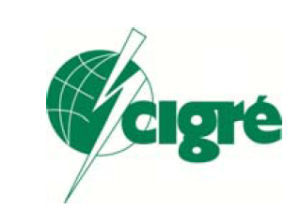 Ce travail visait à analyser l’occurrence du nuage intense au sol (ICG) en Europe de l’Ouest, y compris une grande partie des zones maritimes, définies comme des éclairs présentant au moins un courant de crête de retour supérieur à 200 kA sur la base des données Par EUCLID entre 2007 et 2016. Comme prévu, le taux d’ICG est faible en moyenne, environ 0,18% de l’ensemble nuage-sol (CG), mais en raison d’une tendance saisonnière prononcée, il peut augmenter jusqu’à 1,5% en hiver. Environ 70% des ICG présents sur l’océan Atlantique et la mer Méditerranée sont de polarité négative alors que, dans la même proportion, ils sont positifs sur les régions continentales. La répartition géographique de l’ICG montre une nette amélioration des occurrences d’ICG en période hivernale le long des zones côtières présentant des reliefs élevés, dans le nord de l’Espagne et l’ouest de l’Italie ainsi que dans les Balkans. Dans ces régions, les ICG sont principalement situés dans les terres et, étonnamment, leur polarité est négative, contrairement à la tendance générale qui indique que la plupart des ICG sont positifs sur le continent. Les écarts observés dans les distributions géographiques, saisonnières et de polarité sont supposés être liés aux différents types d’orages se produisant à travers l’Europe et en particulier les nuages océaniques et méditerranéens profonds convectifs hivernaux et méditerranéens. Enfin, certaines zones à forte densité le long des côtes italiennes ou balkaniques peuvent atteindre jusqu’à 0.45 ICG/km²/an les deux polarités combinées.
Ce travail visait à analyser l’occurrence du nuage intense au sol (ICG) en Europe de l’Ouest, y compris une grande partie des zones maritimes, définies comme des éclairs présentant au moins un courant de crête de retour supérieur à 200 kA sur la base des données Par EUCLID entre 2007 et 2016. Comme prévu, le taux d’ICG est faible en moyenne, environ 0,18% de l’ensemble nuage-sol (CG), mais en raison d’une tendance saisonnière prononcée, il peut augmenter jusqu’à 1,5% en hiver. Environ 70% des ICG présents sur l’océan Atlantique et la mer Méditerranée sont de polarité négative alors que, dans la même proportion, ils sont positifs sur les régions continentales. La répartition géographique de l’ICG montre une nette amélioration des occurrences d’ICG en période hivernale le long des zones côtières présentant des reliefs élevés, dans le nord de l’Espagne et l’ouest de l’Italie ainsi que dans les Balkans. Dans ces régions, les ICG sont principalement situés dans les terres et, étonnamment, leur polarité est négative, contrairement à la tendance générale qui indique que la plupart des ICG sont positifs sur le continent. Les écarts observés dans les distributions géographiques, saisonnières et de polarité sont supposés être liés aux différents types d’orages se produisant à travers l’Europe et en particulier les nuages océaniques et méditerranéens profonds convectifs hivernaux et méditerranéens. Enfin, certaines zones à forte densité le long des côtes italiennes ou balkaniques peuvent atteindre jusqu’à 0.45 ICG/km²/an les deux polarités combinées.
SEFTIM a également écrit en collaboration avec Mitch Guthrie (USA) un papier « Risk assessment of lightning-induced surges on PV Systems » traitant du risque dû aux surtensions induites sur les systèmes photovoltaïques (suite du papier sur les dommages dus aux chocs de foudre directs présenté à APL 2017 en Thailand).
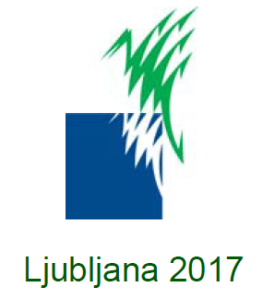 Ce document applique la méthode du risque de la CEI 62305-2 aux systèmes PV et dérive une méthode simplifiée pour déterminer les dispositifs de protection contre les surtensions sont nécessaires ou pas particulièrement sur le côté DC de l’onduleur en tenant compte de la perte de production. La méthode est basée sur la longueur du câblage DC et la densité du sol du flash et conduit à une table basée sur 3 cas typiques. Les hypothèses ont été fournies par de vrais utilisateurs et installateurs, ainsi que par leurs associations. Si nécessaire, ces hypothèses ont été formatées de telle sorte que la méthode décrite dans la CEI 62305-2 s’applique. Lorsqu’un système de protection contre la foudre est mis en place sur un bâtiment supportant un système PV, la détermination des besoins en parafoudre est purement académique et non liée à l’analyse des risques. En tant que tel, ce cas n’est pas abordé dans l’étude. Trois cas principaux ont été sélectionnés comme représentatifs des systèmes PV. PV pour application domestique, PV sur un immeuble de bureaux et une ferme PV. Cette étude porte uniquement sur le risque de surtensions induites par les systèmes PV en raison des impacts indirects à proximité du système PV.
Ce document applique la méthode du risque de la CEI 62305-2 aux systèmes PV et dérive une méthode simplifiée pour déterminer les dispositifs de protection contre les surtensions sont nécessaires ou pas particulièrement sur le côté DC de l’onduleur en tenant compte de la perte de production. La méthode est basée sur la longueur du câblage DC et la densité du sol du flash et conduit à une table basée sur 3 cas typiques. Les hypothèses ont été fournies par de vrais utilisateurs et installateurs, ainsi que par leurs associations. Si nécessaire, ces hypothèses ont été formatées de telle sorte que la méthode décrite dans la CEI 62305-2 s’applique. Lorsqu’un système de protection contre la foudre est mis en place sur un bâtiment supportant un système PV, la détermination des besoins en parafoudre est purement académique et non liée à l’analyse des risques. En tant que tel, ce cas n’est pas abordé dans l’étude. Trois cas principaux ont été sélectionnés comme représentatifs des systèmes PV. PV pour application domestique, PV sur un immeuble de bureaux et une ferme PV. Cette étude porte uniquement sur le risque de surtensions induites par les systèmes PV en raison des impacts indirects à proximité du système PV.
Sep 19
International Colloquium on Lightning and Power Systems ICLPS 2017
 From 18 to 19 September, in Ljubljana (Slovenia), under the CIGRE organization, a 2-day conference on the impact of lightning on power systems. After two guest lectures various topics were discussed since the importance of thunderstorm detection networks, the experiment on HT surge arresters online, lightning ground measurement at the foot of pylons to transformer models for surge due to lightning simulation.
From 18 to 19 September, in Ljubljana (Slovenia), under the CIGRE organization, a 2-day conference on the impact of lightning on power systems. After two guest lectures various topics were discussed since the importance of thunderstorm detection networks, the experiment on HT surge arresters online, lightning ground measurement at the foot of pylons to transformer models for surge due to lightning simulation.
SEFTIM collaborated on a paper entitled “Characteristics and distribution of intense cloud-to-ground flashes in Western Europe” with Stephane Pedeboy from Météorage (France), Marina Bernardi from CESI (Italy) and Wolfgang Schulz from ALDIS-OVE Services (Austria ).
 This work aimed at analysing the occurrence of Intense Cloud-to-Ground (ICG) in Western Europe, including a large part of maritime areas, defined as lightning flashes exhibiting at least one return stroke peak current larger than 200 kA based on lightning data collected by EUCLID between 2007 and 2016. As expected, the rate of ICG is low in average, about 0.18 % of the total Cloud-to-Ground (CG), but because of a pronounced seasonal trend it can increase up to 1.5% in winter. Around 70% of ICG occurring over the Atlantic Ocean and the Mediterranean Sea are of negative polarity whereas, in around the same proportion, they are positive over the continental regions. The geographical distribution of ICG shows a clear enhancement of ICG occurrences during winter time along coastal areas exhibiting elevated terrain, in northern Spain and western Italy and in Balkans. In these regions ICG are mainly located in land and surprisingly their polarity is negative on the contrary to the general trend stating most ICG are positive on the Continent. The discrepancies observed in the geographical, seasonal and polarity distributions are thought to be related to the different type of thunderstorms occurring across Europe and particularly oceanic and Mediterranean winter and continental deep-convective clouds. Finally, some high-density areas along Italian or Balkan coastlines can reach up to 0.45 ICG/km²/year, both polarities combined.
This work aimed at analysing the occurrence of Intense Cloud-to-Ground (ICG) in Western Europe, including a large part of maritime areas, defined as lightning flashes exhibiting at least one return stroke peak current larger than 200 kA based on lightning data collected by EUCLID between 2007 and 2016. As expected, the rate of ICG is low in average, about 0.18 % of the total Cloud-to-Ground (CG), but because of a pronounced seasonal trend it can increase up to 1.5% in winter. Around 70% of ICG occurring over the Atlantic Ocean and the Mediterranean Sea are of negative polarity whereas, in around the same proportion, they are positive over the continental regions. The geographical distribution of ICG shows a clear enhancement of ICG occurrences during winter time along coastal areas exhibiting elevated terrain, in northern Spain and western Italy and in Balkans. In these regions ICG are mainly located in land and surprisingly their polarity is negative on the contrary to the general trend stating most ICG are positive on the Continent. The discrepancies observed in the geographical, seasonal and polarity distributions are thought to be related to the different type of thunderstorms occurring across Europe and particularly oceanic and Mediterranean winter and continental deep-convective clouds. Finally, some high-density areas along Italian or Balkan coastlines can reach up to 0.45 ICG/km²/year, both polarities combined.
SEFTIM has also written in collaboration with Mitch Guthrie (USA) a paper “Risk assessment of lightning-induced surges on PV Systems” dealing with the risk due to overvoltages induced on photovoltaic systems (continuation of the paper on damage from direct lightning strikes presented at APL 2017 in Thailand).
 This paper applies the risk method of IEC 62305-2 to PV systems and derives a simplified method to determine Surge Protective Devices are needed or not especially on the DC side of the inverter taking into account loss of production. The method is based on the length of DC cabling and the flash ground density and lead to a table based on 3 typical cases. The hypotheses have been provided by real users and installers, as well as their associations. When necessary, these hypotheses have been formatted in such a manner that the method described in IEC 62305-2 applies. When a Lightning Protection System is implemented on a building supporting a PV system, the determination of the need of SPDs is purely academic and not related to risk analysis. As such, this case will not be addressed in the present study. Three main cases have been selected as representative of PV systems. PV for domestic application, PV on an office building and a PV farm. This study only addresses the risk of induced surges to PV systems due to indirect strikes in the vicinity of the system.
This paper applies the risk method of IEC 62305-2 to PV systems and derives a simplified method to determine Surge Protective Devices are needed or not especially on the DC side of the inverter taking into account loss of production. The method is based on the length of DC cabling and the flash ground density and lead to a table based on 3 typical cases. The hypotheses have been provided by real users and installers, as well as their associations. When necessary, these hypotheses have been formatted in such a manner that the method described in IEC 62305-2 applies. When a Lightning Protection System is implemented on a building supporting a PV system, the determination of the need of SPDs is purely academic and not related to risk analysis. As such, this case will not be addressed in the present study. Three main cases have been selected as representative of PV systems. PV for domestic application, PV on an office building and a PV farm. This study only addresses the risk of induced surges to PV systems due to indirect strikes in the vicinity of the system.
Aug 12
Mission to India
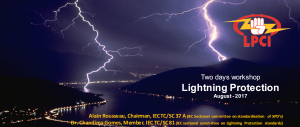 From August 1 to 11, 2-day workshops were held in different Indian cities:
From August 1 to 11, 2-day workshops were held in different Indian cities:
2nd and 3rd August – Mumbai
4th and 5th August – Chennai
8th and 9th August – Bangalore
10th and 11th August – Delhi
This 2-day workshop organised by S.Gopa Kumar of CAPE Electric and K.V.Varadharajan of LPCI (LP Consultants International www.lpci.in ), was designed to cover the important design and installation techniques which will be highly beneficial to engineers working in Industrial, Aviation, Military, Insurance, Power, Communication sectors, Hydrology & meteorology and who provide electronic, IT equipment and services and other institution or individuals interested in the above subject. 2 Days Training Programe on Lightning Protection Invitation Letter
Presentations were made by Professor Chandima Gomes from Malaysia and Alain Rousseau from SEFTIM.
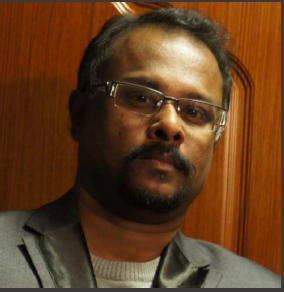
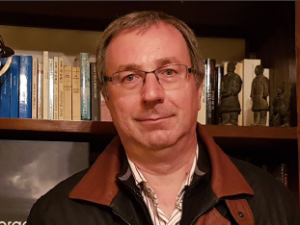 Mr. Chandima Gomes is a professor of electrical engineering and researcher in high voltage engineering and lightning protection at University Putra Malaysia. He is also an expert in power and energy, electromagnetic interference and compatibility and occupational safety management.
Mr. Chandima Gomes is a professor of electrical engineering and researcher in high voltage engineering and lightning protection at University Putra Malaysia. He is also an expert in power and energy, electromagnetic interference and compatibility and occupational safety management.
The following main themes were discussed:
- Lightning initiation, attachment and return stroke, characteristic and statistics, multiplicity, types of lightning, induced voltages, lightning measurements, triggered lightning, laboratory simulations, current models.
- Risk analysis, Introduction to standards & recommendations, calculation of lightning risk factors and recommendation of the level of protection.
- Designing and positioning of air-termination and down conductor systems, materials and dimensions. Designing of earth network, Equipotential bonding, Use of reinforcement steel and foundation earth for lightning protection, installation technologies, isolated protection systems, special issues of earthing, Site inspection and maintenance. Designing of LPS for different type of structures
- Protection of Low Voltage Electrical Systems: Need for protection, Lightning Protection Zonal concept, coupling mechanisms, Lightning and switching impulses, protection scenario, wiring systems for buildings, mode of protection, peak current handing capacity, let-through voltage, follow current, classes of surge protectors, SPD selection criteria, testing procedures.
- Earthing: IEC and IEEE standards. LV networks, system earthing, equipment earthing. Separate systems connected in a single low impedance earthing system. Low resistance connection to an earthing system.
- Selected Cases: Protection of Oil refineries, Explosive storage, Wind turbines, thermal power plants
- Human safety and safety guidelines: Statistics of lightning accidents, direct strikes and side flashes, step potential, touch potential, international guidelines, health hazards, recommendations for outdoor workers, safety devices.
Each of the workshops brought together 40 to 50 people with many questions.
Aug 12
Mission en Inde
 Du 1er au 11 août se sont tenus des ateliers de 2 jours dans différentes villes d’Inde :
Du 1er au 11 août se sont tenus des ateliers de 2 jours dans différentes villes d’Inde :
2 au 3 Août – Mumbai (Bombay)
4 au 5 Août – Chennai (Madras)
8 au 9 Août – Bangalore
10 au 11 Août – Delhi
Cet atelier de 2 jours organisé par S.Gopa Kumar de CAPE Electric et KVVaradharajan de LPCI (LP Consultants International www.lpci.in), a été conçu pour couvrir les importantes techniques de conception et d’installation qui seront très bénéfiques pour les ingénieurs travaillant dans le secteur industriel. Aviation, Militaire, Assurances, Energie, Communication, Hydrologie et météorologie et qui fournissent des équipements et services électroniques, informatiques et d’autres institutions ou individus intéressés par ce sujet. 2 Days Training Programe on Lightning Protection Invitation Letter
Les présentations étaient réalisées par le Professeur Chandima Gomes de Malaisie et Alain Rousseau de SEFTIM.

 Mr. Chandima Gomes est professeur de génie électrique et chercheur en ingénierie haute tension et protection contre la foudre à l’Université de Putra en Malaisie. Il est également expert en énergie et énergie, interférence électromagnétique et compatibilité et gestion de la sécurité.
Mr. Chandima Gomes est professeur de génie électrique et chercheur en ingénierie haute tension et protection contre la foudre à l’Université de Putra en Malaisie. Il est également expert en énergie et énergie, interférence électromagnétique et compatibilité et gestion de la sécurité.
Les thèmes principaux suivants ont été abordés :
- Initiation de la foudre, attachement et coup en retour, caractéristiques et statistiques, multiplicité, types d’éclairs, tensions induites, mesures de foudre, éclairs déclenchés, simulations de laboratoire, modèles actuels.
- Analyse du risque, Introduction aux normes et recommandations, calcul des facteurs liés au risque foudre et recommandation du niveau de protection.
- Conception et positionnement de systèmes de capture et de conducteurs de descente, matériaux et dimensions. Conception de réseau de terre, équipotentialité, utilisation d’armatures en acier et de fondations pour la protection contre la foudre, technologies d’installation, systèmes de protection isolés, problèmes particuliers de mise à la terre, inspection et maintenance du site. Conception de SPF pour différents types de structures
- Protection des systèmes électriques basse tension: besoin de protection, concept de zone de protection contre la foudre, mécanismes de couplage, impulsions de foudre et de manœuvre, scénario de protection, systèmes de câblage pour bâtiments, mode de protection, capacité de courant de choc, niveau de protection, courant de suite, classes de parafoudres, critères de sélection SPD, procédures de test.
- Mise à la terre : normes IEC et IEEE. Réseaux BT, mise à la terre du système, mise à la terre de l’équipement. Systèmes séparés connectés dans un seul système de mise à la terre à faible impédance. Connexion à faible résistance à un système de mise à la terre.
- Cas sélectionnés : protection des raffineries de pétrole, stockage d’explosifs, éolien, centrales thermiques
- Consignes de sécurité et de protection des êtres vivants: statistiques sur les accidents de foudre, les impacts directs et latéraux, potentiel de pas et de contact, directives internationales, les risques pour la santé, les recommandations pour les travailleurs extérieurs, les dispositifs de sécurité.
Chacun des workshops a réuni entre 40 et 50 personnes avec des nombreuses questions.


